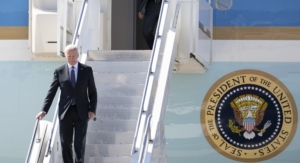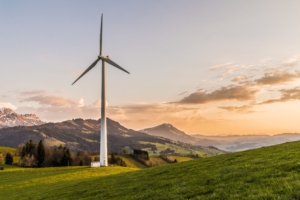Trade Winds Blow Against Renewables
Here’s What You Need To Know
From the Kyoto Protocol to the Paris Climate Accords, international agreements have historically been a boon to the growth of renewable energy. However, as a recent U.S. Department of Commerce investigation of possible Chinese dumping of solar panels into the U.S. highlights, international currents can also inhibit renewables development. The inquiry, which stalled solar projects across the U.S., is just the latest example of an escalating trend of international trade turbulence disrupting the development of renewable energy infrastructure.
While China’s dodging of U.S. trade rules is nothing new, it is just one example of the way trade rules hinder growth in the renewable energy sector. Public affairs professionals helping firms navigate the energy transition will have to factor in the shift in global attitudes towards trade taking place and how that shift will complicate renewable power development and corporate commitments to a net zero carbon future.
Trade Disruptions Are Impacting Growth of Renewables
The ongoing Commerce Department investigation has grabbed recent headlines, but it is not even the first trade case on Chinese dumping, which has caught flak in the U.S. and European Union for years. The trade issue also stretches well beyond this silicon schism:
Subscribe to Receive Insights
"*" indicates required fields
- British Green Subsidies Draw European Challenges at World Trade Organization (WTO). In March, the European Union filed a dispute at the WTO against the United Kingdom, claiming Britain’s green energy subsidies for offshore wind power plants violates the WTO’s “national treatment principle.” WTO disputes can take several years to resolve, flying in face of the UK’s aim to double its wind-generating capacity by 2030.
- Mexican Energy Nationalization Infringes on Foreign Investments in Renewables. In April, over vociferous protests from the Biden Administration, Mexican President Andrés Manuel López Obrador enacted a new national energy plan that among other measures limits private and foreign investments in renewable energy, effectively cancelling supply contracts from foreign companies despite Mexico’s commitments under the United States-Mexico-Canada Agreement.
- Local Protests in U.S. Hinder Canadian Hydropower Imports. While Keystone XL has gotten more notice, Canada’s energy imports to the U.S. also include hydropower. However, impediments from local and state governments—under pressure from Native American tribes and environmental activists—have hindered these cross-border projects for years.
Why Are Trade Disruptions Accelerating Alongside the Energy Transition?
Competing Policy Priorities: Even as countries push to accelerate the energy transition, national interests are complicating their environmental ambitions. That is because nations are confronted with two competing interests: investing in a domestic manufacturing base of the clean energy technologies that will secure the country’s energy future and constructing as much renewable power capacity as quickly and economically as possible to meet aggressive emission reduction commitments. As Georgetown professor Joanna Lewis warned nearly eight years ago, “there is a fundamental conflict between the political economy of domestic renewable energy support and the basic principles of global trade regimes, with direct implications for nations’ abilities to transition to low-carbon economies.” The emerging post-COVID policy environment has only accelerated countries’ interest in protecting and reshoring industries with national and economic security implications, such as clean power generation.
The Return of Geopolitics: In addition to the U.S. and China’s continued decoupling, Russia’s invasion of Ukraine is the latest signal geopolitics is back, with countries issuing sanctions and other restrictions in response to Russian aggression. Russia, however, is a major producer of copper, nickel, platinum, and other minerals vital for renewable energy, and the global divestment from Russia has skyrocketed the price of such materials. Nickel, for example, has reached an 11-year high. Rising geopolitics has seeped into the renewable market, as these developments have shaken up the supply chain and impeded the upward trajectory of renewables’ share on the world’s energy grid.
Clean Energy Requires Clean Trade, too: Today, many companies are making social impact commitments and enforcing environmental, social, and governance (ESG) standards in their operations. Even for companies not doing so proactively, an increasing number of investors expect their portfolio companies to meet such standards. For an industry that presents itself as a cleaner, more responsible alternative to incumbent power producers, there will be considerable scrutiny for failing to live up to such commitments, some of which are also becoming government mandates. Just last week, The Uyghur Forced Labor Prevention Act went into effect restricting the importation of goods manufactured in the Xinjiang region of China “unless an importer can establish that the products were not made with forced labor.” This new mandate adds a layer of complexity for renewable developers, as the region produces 50% of world’s supply of polysilicon, a key solar panel component. Nor is it the first-time Congressional action regarding trade has complicated renewables development. 2010’s Dodd–Frank Wall Street Reform and Consumer Protection Act mandated the disclosure of the use of conflict minerals, which are crucial to building renewable infrastructure.
Where Do We Go From Here?
As the demand for renewables continues to grow, the industry and its investors and consumers will face more trade winds causing uncertainty in the marketplace. Consequently, clean energy public affairs professionals will have to go to trade school, because navigating this new reality and bringing more renewables on to the grid will mean understanding the broader trends and interests shaping trade policies and the geopolitical landscape, both within and outside of the energy industry.



